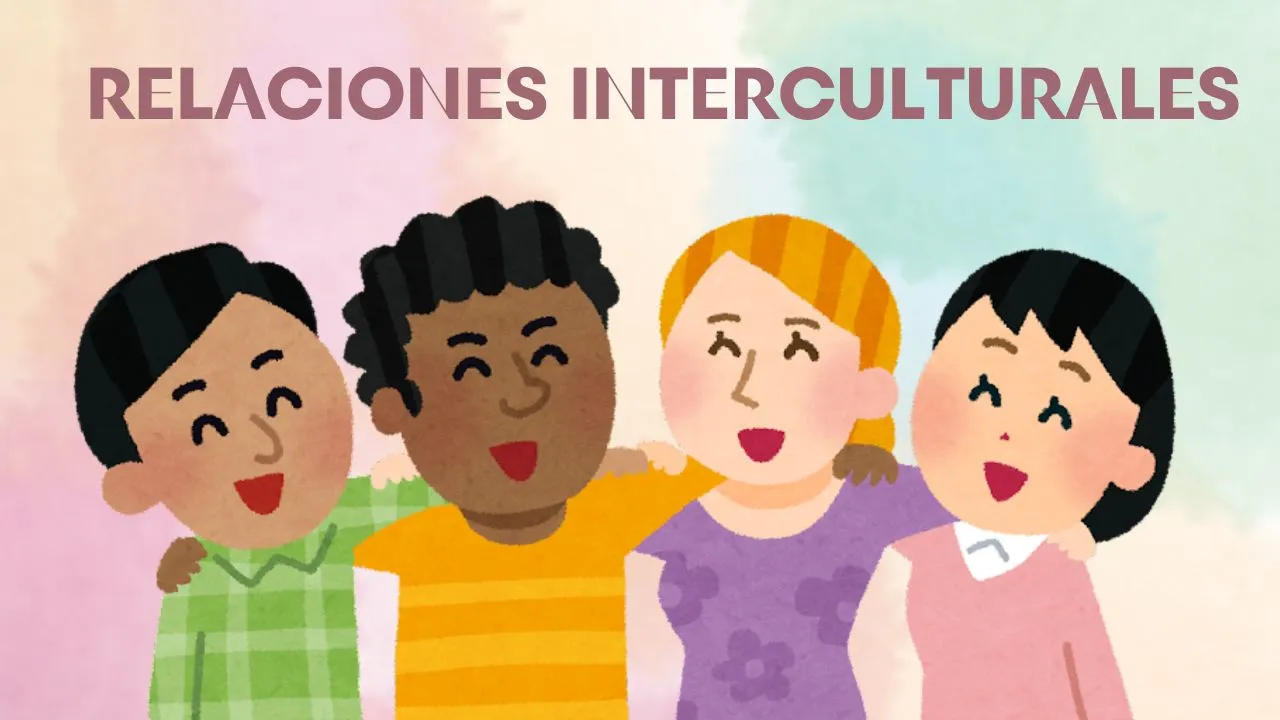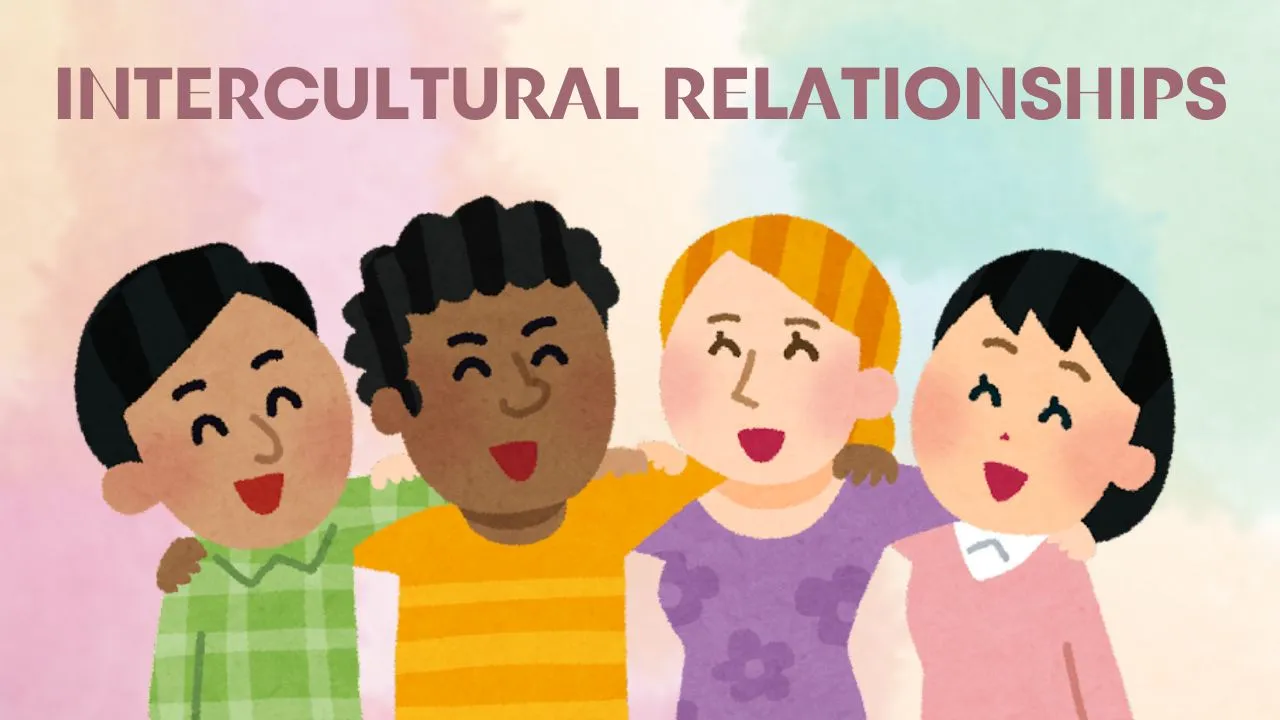¿Qué son las relaciones interculturales? Buscando podemos encontrar muchas definiciones y desde muchos puntos de vista. Hay muchas disciplinas que abordan este tema: la sociología, la antropología y la psicología son ejemplos de esto. Construir amistades de por sí es un proceso largo y complejo, sobre todo si queremos amistades duraderas y profundas, pero si a esto le sumamos convivir con personas con culturas distintas a la nuestra, aumenta la complejidad y puede dificultarse la comprensión y cooperación. En un mundo cada vez más globalizado, las redes sociales y las nuevas formas de comunicación nos acercan más; quizás estamos más cercanas todas las culturas como nunca han estado en otra época.

La amistad entre distintos grupos con distintas culturas desde el contacto positivo puede reducir desde los prejuicios hasta conflictos y, sobre todo, compartir lo mejor de cada cultura. Para que este tipo de contacto sea funcional, verdadero y efectivo, siempre debe haber igualdad de estatus entre ambos lados de la amistad, compartir objetivos comunes y estar basada en cooperación y apoyo.
Las manifestaciones de amistad intercultural positiva pueden verse de muchas formas, individuos que se sienten cómodos aunque no compartan ideas, tradiciones, eventos, etc. Individuos que se sienten con un mismo valor y en una relación equitativa. Intereses en común pueden ir desde gustos musicales, recreativos, culturales, de formas de comunicarse o de información a consumir. La cooperación, por otra parte, se refleja en la disposición de ambos lados a trabajar juntos y ayudarse mutuamente.
La construcción de amistades interculturales tiene muchos desafíos, barreras del lenguaje, la distancia, hoy en día redes sociales, traducción automática y otras tecnologías han relegado esto a segundo lugar. Pero hay un desafío que sí es verdaderamente difícil de superar, el etnocentrismo, esa tendencia a juzgar otras culturas desde la perspectiva de la propia, dejándonos llevar por sesgos o desconocimientos y haciendo que aparezcan conflictos y adversidades muchas veces superficiales.
Sin dudas, podemos llegar a la conclusión de que sin importar nuestra cultura, nuestra nacionalidad y nuestras tradiciones, la energía positiva, la cooperación y la educación, así como la comprensión mutua y evitar sesgos y prejuicios, hacen que cualquier amistad crezca y se fortalezca.
Martes 11 de febrero: La amistad entre culturas: cómo superar barreras y construir puentes.
Quiero agradecerles sinceramente por tomarse el tiempo de leer este artículo. Su apoyo significa mucho para mí y me motiva a seguir compartiendo contenido que pueda ser útil e interesante para ustedes. Si encontraron este artículo útil o disfrutaron leyéndolo, les agradecería enormemente sus comentarios. Éxitos.

Intercultural relationships
What are intercultural relationships? Searching, we can find many definitions and from many points of view. There are many disciplines that address this topic: sociology, anthropology, and psychology are examples of this. Building friendships in itself is a long and complex process, especially if we want lasting and deep friendships, but if we add to this living with people from different cultures than our own, the complexity increases and understanding and cooperation can become difficult. In an increasingly globalized world, social networks and new forms of communication bring us closer; perhaps all cultures are closer together now than they have been at any other time.

Friendship between different groups with different cultures through positive contact can reduce everything from prejudices to conflicts and, above all, share the best of each culture. For this type of contact to be functional, true, and effective, there must always be equality of status between both sides of the friendship, share common goals, and be based on cooperation and support.
The manifestations of positive intercultural friendship can be seen in many ways, individuals who feel comfortable even if they do not share ideas, traditions, events, etc. Individuals who feel they have the same value and are in an equitable relationship. Common interests can range from musical, recreational, cultural tastes, ways of communicating, or information to consume. Cooperation, on the other hand, is reflected in the willingness of both sides to work together and help each other.
Building intercultural friendships has many challenges: language barriers, distance, nowadays social networks, automatic translation, and other technologies have relegated this to second place. But there is a challenge that is truly difficult to overcome: ethnocentrism, that tendency to judge other cultures from the perspective of one's own, letting ourselves be carried away by biases or misunderstandings and causing conflicts and adversities that are often superficial.
Without a doubt, we can conclude that regardless of our culture, nationality, and traditions, positive energy, cooperation, and education, as well as mutual understanding and avoiding biases and prejudices, make any friendship grow and strengthen.
Martes 11 de febrero: La amistad entre culturas: cómo superar barreras y construir puentes.
I sincerely want to thank you for taking the time to read this article. Your support means a lot to me and motivates me to continue sharing content that can be useful and interesting for you. If you found this article helpful or enjoyed reading it, I would greatly appreciate your feedback. Best wishes.

| I’m Ernesto, a Cuban passionate about art and writing. Always learning, always growing. Excited to share and learn more every day! I write about art, drawing, video games, nature, and review the things I like. My goal is to inspire and connect with others through my creative journey. |
|---|
Translated with DeepL.com (free version)
I apologize if there are any grammatical errors, English is not my native language, I have tried to be as careful as possible.
I regularly create images on Pixabay, which are free of copyright. Access my gallery by clicking here.
All assets, illustrations and banners have been created by me and are original content, unless otherwise specified.
The cover of this article was created using Canva.